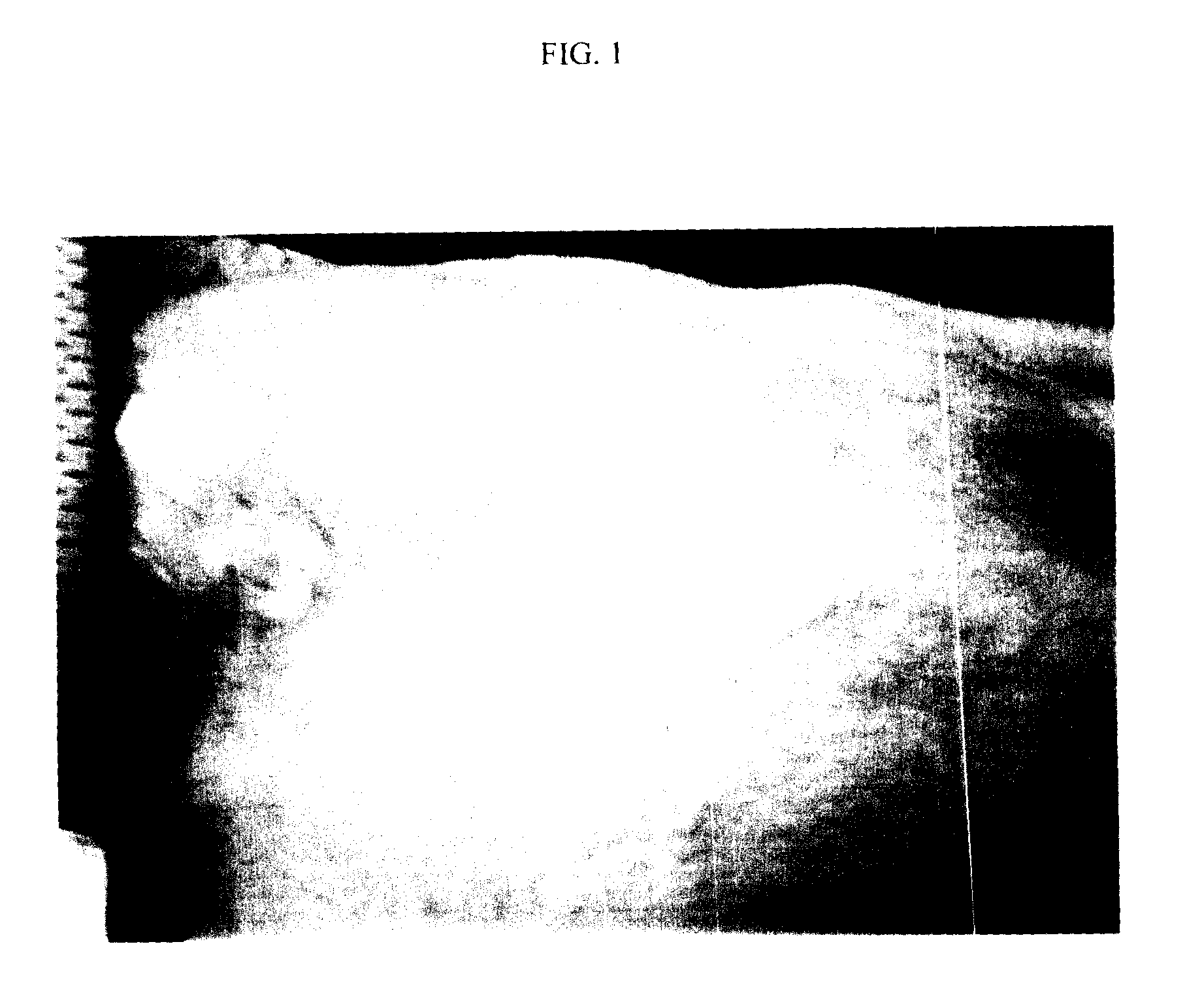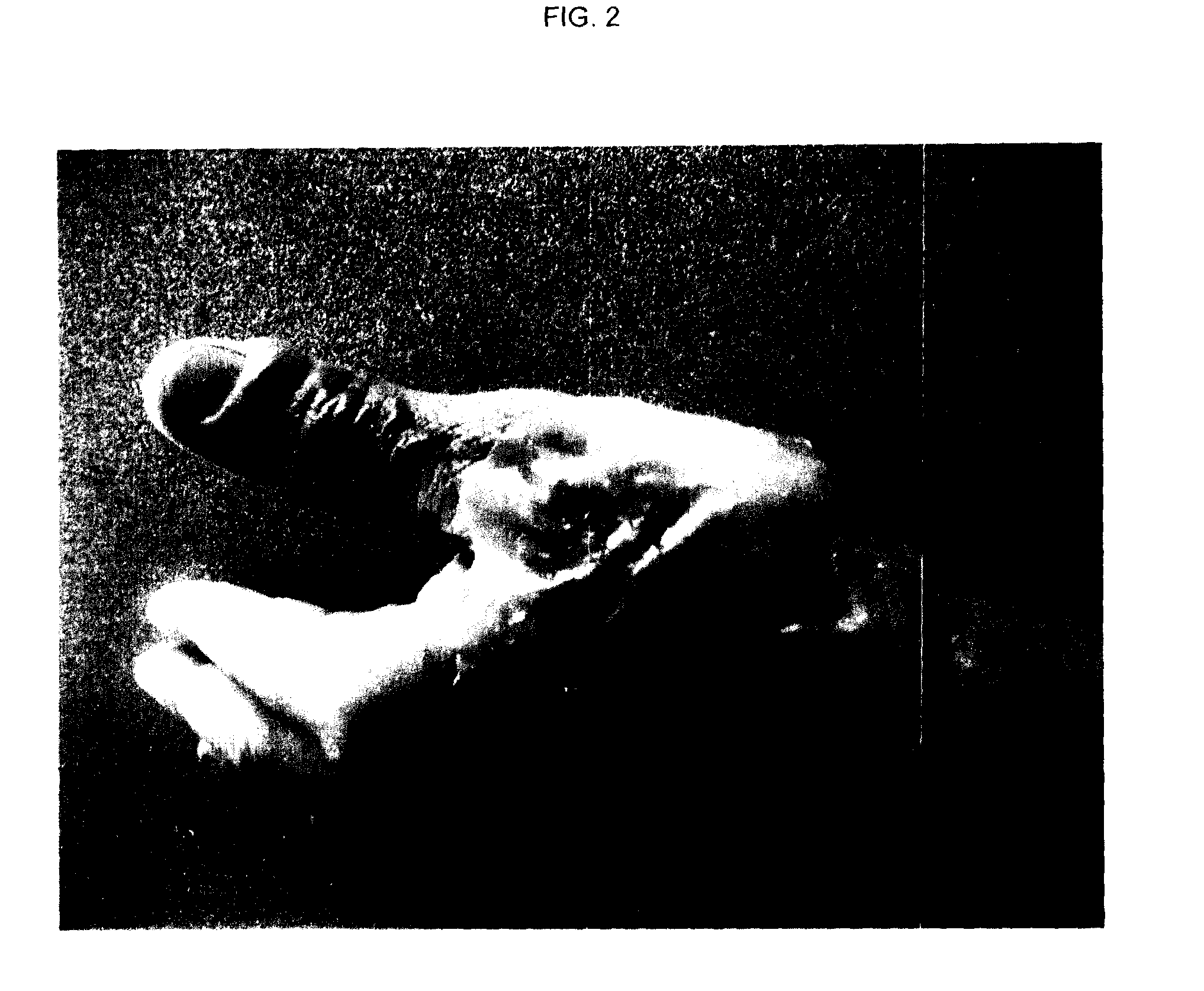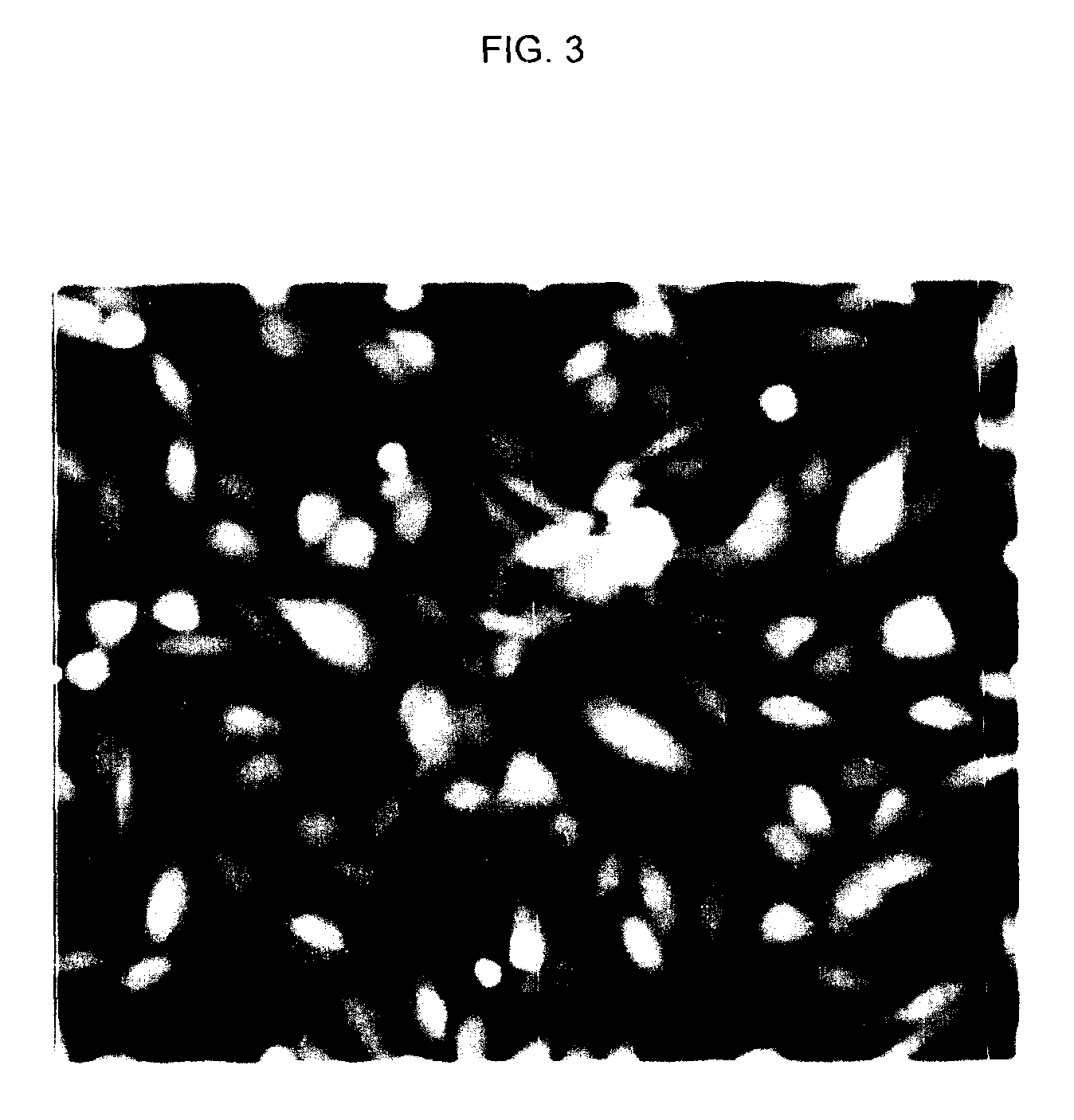Burn bandage
- Summary
- Abstract
- Description
- Claims
- Application Information
AI Technical Summary
Problems solved by technology
Method used
Image
Examples
example 1
Synthesis Method 1
[0043]A solution of 10% PVA w / v is heated to 80° C. An amount of finely ground 5% w / v of PASP is added to the PVA and mechanically stirred at 80° C. for 2 h under acidic conditions using aliquots of 10M HCl to reduce the pH to 3. After 2 h the solution pH should be approximately 6 and partial esterification of PASP with PVA will increase the viscosity and hydrophobic of the resin. The PVA:PASP is then cooled to 30° C. and the antioxidants and natural products were added in appropriate amounts totaling no more than 15% w / v of the entire gel. The resin with additives is stirred at 30° C. for 30 min. The very viscous resin is then poured into a mold (dish) and placed in a vacuum at 30° C. After 4 h the mold is removed and frozen at −80° C. and thawed for 3 cycles, after which the gel is removed from the mold and lightly sprayed with a solution of 10% w / v borax, 10% glycerol w / v and 1% cineol w / v, to cross link via H-boding the surface residual PVA hydroxyl groups. The...
example 2
Synthesis Method 2
[0044]A solution of 10% PVA w / v is heated to 80° C. An amount of finely ground 2% w / v PASP is added to the PVA and mechanically stirred at 80° C. for 2 h with pH adjusted to approximately 3 with 10M HCl. After 2 h the solution pH should be approximately 5.0 and partial esterification of the PVA with PASP should occur. The now PVA:PASP resin is cooled to 30° C. and appropriate amounts of antioxidants and natural products are added to the resin and mixed for 30 min at 30° C. The resin is poured into a mold and frozen and cooled to room temperature (21° C.), before being placed in a freezer at −80° C. The resin is then frozen and thawed 3 times, prior to being immersed in a 10% w / v borax, 10% w / v glycerol and 1% w / v cineol solution for 15 min until the gel is homogeneous and opaque white. The texture of this gel is very similar to that of natural rubber, yet is cold to the touch (18° C.).
example 3
Synthesis Method 5
[0045]A solution of 10% PVA w / v is heated to 80° C. An amount of finely ground 10% w / v PASP is added to the PVA and mechanically stirred at 80° C. for 2 h with pH adjusted to approximately 2 with 10M HCl. After 2 hr the solution is poured on a glass substrate and cured at 150° C. for 30 min to produce an opaque thin film. The film is then removed and washed 3 times with solutions of 70% MeOH and EtOH. The film is then placed in saturated solution of 15 mL 5% w / v per ingredient (max of 20% w / v for total additives) per 4 cm2 gel in a closed container until the liquid is removed and fully absorbed by the bandage. The bandage now partially hydrated is cool and moist, with a natural rubber texture.
PUM
| Property | Measurement | Unit |
|---|---|---|
| Fraction | aaaaa | aaaaa |
| Fraction | aaaaa | aaaaa |
| Fraction | aaaaa | aaaaa |
Abstract
Description
Claims
Application Information
 Login to view more
Login to view more - R&D Engineer
- R&D Manager
- IP Professional
- Industry Leading Data Capabilities
- Powerful AI technology
- Patent DNA Extraction
Browse by: Latest US Patents, China's latest patents, Technical Efficacy Thesaurus, Application Domain, Technology Topic.
© 2024 PatSnap. All rights reserved.Legal|Privacy policy|Modern Slavery Act Transparency Statement|Sitemap



